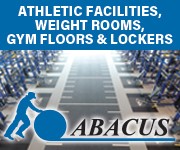Whether planning to expand, renovate, or build, they view physical facility upgrades as a way to remain competitive in attracting and retaining students. But, while structural enhancements have their appeal, they don’t translate to results like lean operations, effective programs, increased facility usage, and better academic performance.
Technology is the key to achieving those marks. And any college or university recreation center that isn’t using technology to automate data collection and analysis is falling behind the curve.
Grow & Expand Campus Recreation
A shiny new building or addition doesn’t have the intended impact if students aren’t using the facility and if operations aren’t running insightfully. The real goals are how to effectively engage students throughout their matriculation and ensure efficient facility management. Tech-powered data is the answer, and today’s fitness apps and mobile platform solutions make that data delivery highly cost-effective.
Pen-and-paper data gathering is obsolete. It decreases staff productivity-not to mention accuracy-and provides little, if any, real benefit to attracting and retaining students. Recreation directors and facility managers need data that is automatically generated by technology. It serves multiple functions and is far more reliable and actionable. It enables informed decision-making that leads to improved staff and facility efficiency alongside increased student loyalty.
If directors and managers can’t track how students are using their facilities, they’ll miss out on powerful facts and figures that facilitate and expedite:
. Understanding where and when to invest in specific facility expansion and equipment . Learning how to better manage hours of operation, staffing, and programming . Utilizing predictive analytics that empower strategic student engagement Operational decisions and student communications based on hunches or incomplete, inaccurate, or rudimentary data run the risk of failure that results in student loss and budget waste.
Stay Fiscally Fit
All college and university recreation department directors, in tandem with their rec center and facility managers, are asked to justify their budgets. Whether proposing to add programs and services, purchase new equipment, or undergo extensive renovations and even new construction, any endeavor that’s going to cost the school money must have a legitimate need that’s provable, and a purpose that aligns with the institution’s overall goals.
Customized technology provides that proof. To properly inform operational decisions, a mobile platform should facilitate real-time data collection on facility and equipment usage, occupancy and attendance rates. Connected to an administrative portal or dashboard, the technology should allow for corresponding reports-complete with options to convert specific data into graphs and charts-that quantify the statistics into actionable information.
That way, trends that encapsulate and demonstrate recreation and fitness facility needs can be identified and then justified in the budget submission and review process. An administrative dashboard can also allow staff to quickly initiate, assign, track, and draw data from customizable administrative forms. Incident reports, for example, often require staff to set certain stipulations and communication protocols. That can be accomplished easily through an online dashboard and, if the report is marked as an emergency, the dashboard can be configured to automate distribution to the appropriate staff. All of this greatly reduces labor by streamlining the process while increasing accuracy by reducing opportunities for human error.
Give the Students What They Want
Today’s college students love their tech tools and expect – if not demand – that their schools use technology to make their daily life more manageable and convenient. Every student has a smartphone or other mobile device within arms-reach 24/7, and they spend 8-10 hours a day on them. They’re also bombarded by an average of 5,000 messages a day, from social media and emails to advertisements and apps. How can a college or university recreation department hope to rise above that noise and grab students’ attention? The trick is strategic messaging that’s personalized to the needs and wants of the individual. That’s where fitness technology can take what seems an insurmountable challenge and make it achievable.
Data on students’ center, equipment, and services usage; class attendance; and reservation history-combined with preferences they select on a fitness app-give facility managers a whole picture and allow them to deliver targeted, motivational messages. Those data also empower facility operators, providing predictive analytics that identify when to re-engage a student who has missed several classes in a row or has stopped visiting the center altogether.
In addition, the fitness app should arm students with instantaneous information that helps them stay on track and supports their ideal routines and workout environment. For example, some students prefer a crowded gym because they’re driven when surrounded by people who are exercising, or because they want socializing to be part of their visit. Others feel more focused or more comfortable with a smaller crowd.
Whatever the student’s preference, a fitness app can offer real-time information, so a person knows whether the current occupancy of the weight room, cardio area or pool matches his or her preference. On campuses that are currently using such technology, students rely on this feature to find their optimal workout time.
Students also require a tech solution that conveys an upbeat energy, has vibrant design, and delivers a seamless user experience. The best solutions allow for staff to add new mobile features and have those immediately appear on the app without requiring students to download an update.
Win the Desired Results
Many studies show that students who go to the gym three times a week earn a higher GPA and graduate on time. In turn, higher GPAs and better graduation rates help colleges and universities recruit new students and improve their institutional ranking. So, every tech feature that increases the odds that students remain actively engaged in fitness and recreation represents a win-win.
If students can’t make class and equipment reservations, and receive reminders and notifications tailored to their preferences-all at their fingertips-the college or university recreation center could easily lose them and all of the related benefits. Conversely, when students feel they are a valued part of the campus recreation and fitness community, that the staff truly cares about their needs and preferences, they are far more likely to stay engaged and make using the recreation center a priority.
A mobile platform can provide recreation department staff with fast, reliable tools for automating processes while creating a better understanding of students’ preferences. As colleges and universities evaluate potential technology partners, it’s important to make sure the solution automates data collection that informs decisions and allows for ongoing customization and instantaneous app modifications. Once a school decides on a partner, the platform should do the heavy lifting to better engage students and improve their experience at the recreation center-and it should all start with the touch of a button.










